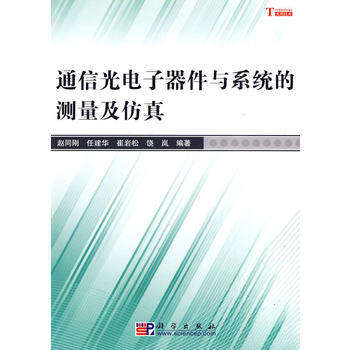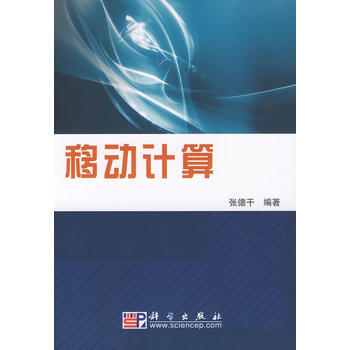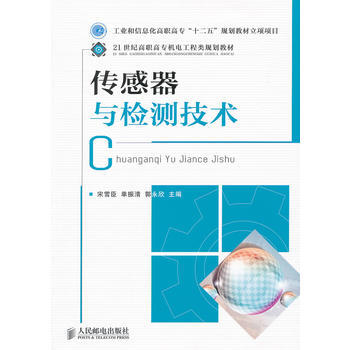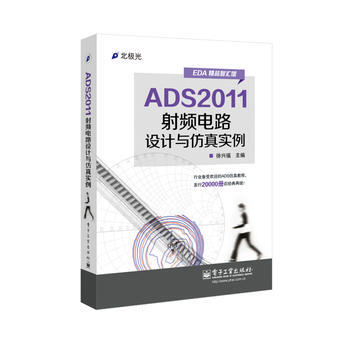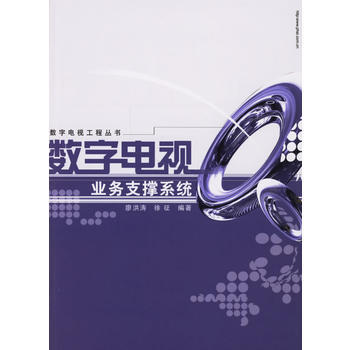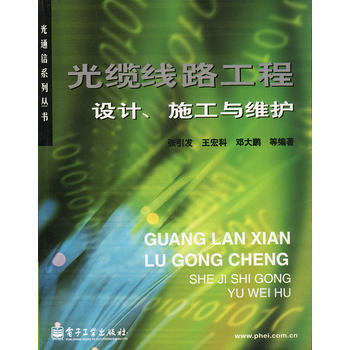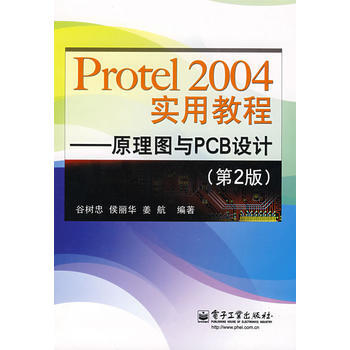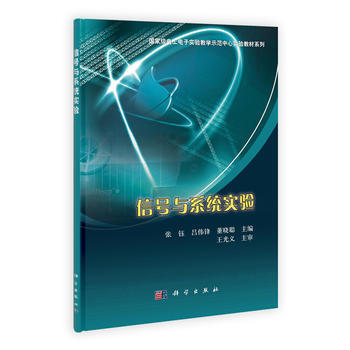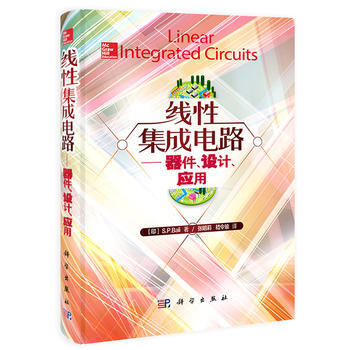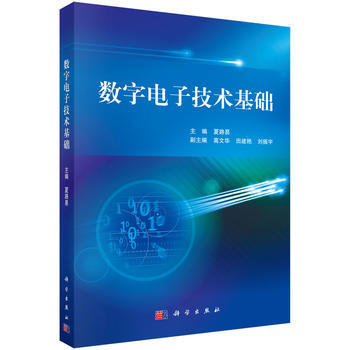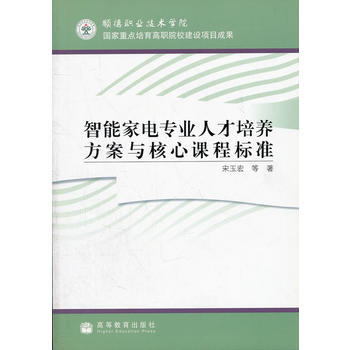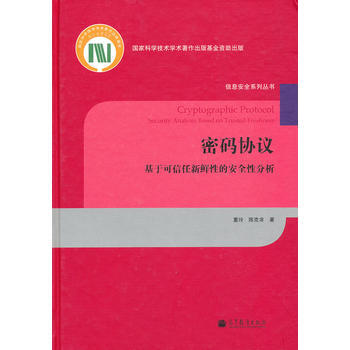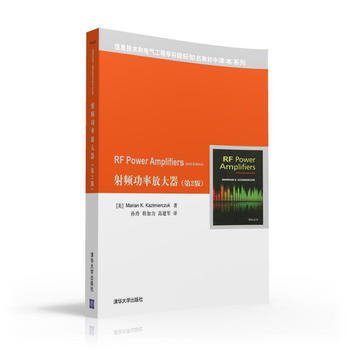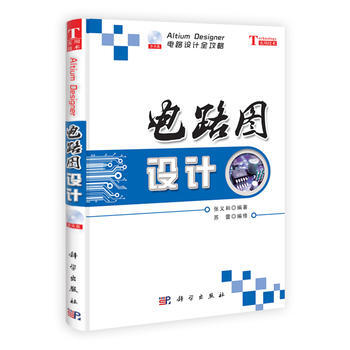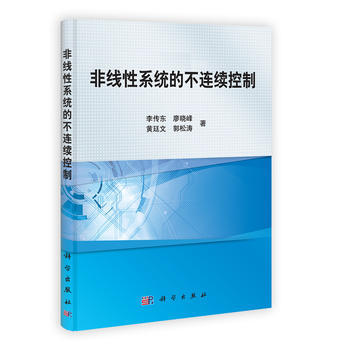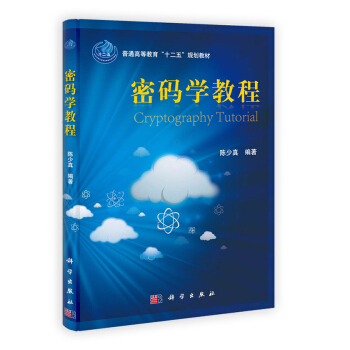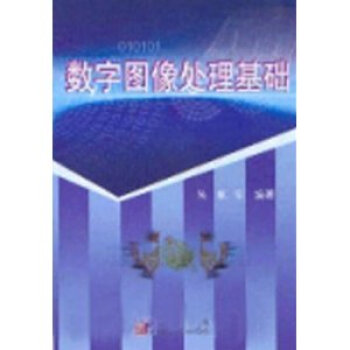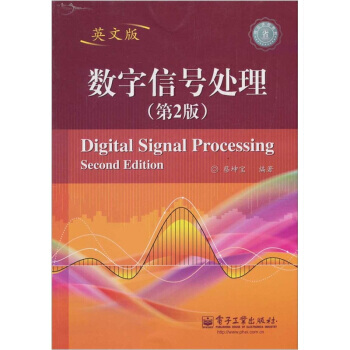
数字信号处理(第2版)(英文版) 蔡坤宝 9787121129940 epub pdf mobi txt 电子书 下载 2025
数字信号处理(第2版)(英文版) 蔡坤宝 9787121129940 epub pdf mobi txt 电子书 下载 2025
简体网页||繁体网页
下载链接1
下载链接2
下载链接3
发表于2025-05-21
商品介绍
数字信号处理(第2版)(英文版) 蔡坤宝 9787121129940 epub pdf mobi txt 电子书 下载 2025
相关书籍
书籍描述
基本信息
书名:数字信号处理(第2版)(英文版)
定价:39.90元
作者:蔡坤宝
出版社:电子工业出版社
出版日期:2011-03-01
ISBN:9787121129940
字数:
页码:316
版次:2
装帧:平装
开本:16开
商品重量:0.481kg
编辑推荐
内容提要
《数字信号处理(第2版)(英文版)》系统地阐述了数字信号处理所涉及的信号与系统分析和系统设计的基本理论、基本分析与设计方法、基本算法和处理技术。《数字信号处理(第2版)(英文版)》共10章,主要内容包括:离散时间信号与系统的基本概念,离散时间信号与系统的变换域分析,包括z变换和离散时间傅里叶变换、连续时间信号的抽样与重建,离散傅里叶变换及其快速算法(fft),数字滤波器实现的基本结构,iir和fir数字滤波器的设计原理与基本设计方法,数字信号处理中的有限字长效应,多抽样率数字信号处理。《数字信号处理(第2版)(英文版)》配有多媒体电子课件、英文版教学大纲、习题指导与实验手册。
n 《数字信号处理(第2版)(英文版)》可以作为电子与通信相关专业的本科数字信号处理课程中英文双语教学的教材,或中文授课的英文版教学参考书,也可供从事数字信号处理的工程技术人员学习参考。《数字信号处理(第2版)(英文版)》尤其适合初步开展数字信号处理课程中英文双语授课的师生选用。
目录
1 introduction
n1.1 what is a signal
n1.2 what is a system
n1.3 what is signal processing
n1.4 classificatioof signals
n1.4.1 deterministic and random signals
n1.4.2 continuous-time and discrete-time signals
n1.4.3 periodic signals and nonperiodic signals
n1.4.4 energy signals and power signals
n1.5 overview of digital signal processing
n2 discrete-time signals and systems
n2.1 discrete-time signals: sequences
n2.1.1 operatioosequences
n2.2 basic sequences
n2.2.1 some basic sequences
n2.2.2 periodicity of sequences
n2.2.3 representatioof arbitrary sequences
n2.3 discrete-time systems
n2.3.1 classificatioof discrete-time systems
n2.4 time-domairepresentations of lti systems
n2.4.1 the linear convolutiosum
n2.4.2 interconnections of lti systems
n2.4.3 stability conditioof lti systems
n2.4.4 causality conditioof lti systems
n2.4.5 causal and anticausal sequences
n2.5 linear constant-coefficient difference equations
n2.5.1 recursive solutioof difference equations
n2.5.2 classical solutioof difference equations
n2.5.3 zero-input response and zero-state response
n2.5.4 the impulse response of causal lti systems
n2.5.5 recursive solutioof impulse responses
n2.5.6 classificatioof lti discrete-time systems
nproblems
n3 transform-domaianalysis of discrete-time signals and systems
n3.1 the z-transform
n3.1.1 definitioof the z-transform
n3.1.2 a general shape of the regioof convergence
n3.1.3 uniqueness of the z-transform
n3.2 relatiobetweethe rocs and sequence types
n3.3 the z-transform of basic sequences
n3.4 the inverse z-transform
n3.4.1 contour integral method
n3.4.2 partial fractioexpansiomethod
n3.4.3 long divisiomethod
n3.4.4 power series expansiomethod
n3.5 properties of the z-transform
n3.6 the discrete-time fourier transform
n3.6.1 definitioof the discrete-time fourier transform
n3.6.2 convergence criteria
n3.6.3 properties of the discrete-time fourier transform
n3.6.4 symmetry properties of the discrete-time fourier transform
n3.7 transform-domaianalysis of lti discrete-time systems
n3.7.1 the frequency response of systems
n3.7.2 the transfer functioof lti systems
n3.7.3 geometric evaluatioof the frequency response
n3.8 sampling of continuous-time signals
n3.8.1 periodic sampling
n3.8.2 reconstructioof bandlimited signals
n3.9 relations of the z-transform to the laplace transform
nproblems
n4 the discrete fourier transform
n4.1 the discrete fourier series
n4.2 properties of the discrete fourier series
n4.2.1 evaluatioof the periodic convolutiosum
n4.3 the discrete fourier transform
n4.4 properties of the discrete fourier transform
n4.4.1 circular convolutiotheorems
n4.5 linear convolutions evaluated by the circular convolution
n4.6 linear time-invariant systems implemented by the dft
n4.7 sampling and reconstructioithe z-domain
n4.8 fourier analysis of continuous-time signals using the dft
n4.8.1 fourier analysis of nonperiodic continuous-time signals
n4.8.2 practical considerations
n4.8.3 spectral analysis of sinusoidal signals
nproblems
n5 fast fourier transform algorithms
n5.1 direct putatioand efficiency improvement of the dft
n5.2 decimation-in-time fft algorithm with radix-2
n5.2.1 butterfly-branch transmittance of the decimation-in-time fft
n5.2.2 in-place putations
n5.3 decimation-in-frequency fft algorithm with radix-2
n5.4 putational method of the inverse fft
nproblems
n6 digital filter structures
n6.1 descriptioof the digital filter structures
n6.2 basic structures for iir digital filters
n6.2.1 direct form i
n6.2.2 direct form ii
n6.2.3 cascade form
n6.2.4 parallel form
n6.3 basic structures for fir digital filters
n6.3.1 direct forms
n6.3.2 cascade forms
n6.3.3 linear-phase forms
nproblems
n7 desigtechniques of digital iir filters
n7.1 preliminary considerations
n7.1.1 frequency response of digital filters
n7.2 discrete-time systems characterized by phase properties
n7.3 allpass systems
n7.3.1 nonminimum-phase systems represented by a cascade connection
n7.3.2 group delay of the minimum-phase systems
n7.3.3 energy delay of the minimum-phase systems
n7.4 analog-to-digital filter transformations
n7.4.1 impulse invariance transformation
n7.4.2 step invariance transformation
n7.4.3 bilinear transformation
n7.5 desigof analog prototype filters
n7.5.1 analog butterworth lowpass filters
n7.5.2 analog chebyshev lowpass filters
n7.6 desigof lowpass iir digital filters
n7.6.1 desigof lowpass digital filters using the impulse invariance
n7.6.2 desigof lowpass digital filters using the bilinear transformation
n7.7 desigof iir digital filters using analog frequency transformations
n7.7.1 desigof bandpass iir digital filters
n7.7.2 desigof bandstop iir digital filters
n7.7.3 desigof highpass iir digital filters
n7.8 desigof iir digital filters using digital frequency transformations
n7.8.1 lowpass-to-lowpass transformation
n7.8.2 lowpass-to-highpass transformation
n7.8.3 lowpass-to-bandpass transformation
n7.8.4 lowpass-to-bandstop transformation
nproblems
n8 desigof fir digital filters
n8.1 properties of linear phase fir filters
n8.1.1 the impulse response of linear-phase fir filters
n8.1.2 the frequency response of linear-phase fir filters
n8.1.3 characteristics of amplitude functions
n8.1.4 constraints ozero locations
n8.2 desigof linear-phase fir filters using windows
n8.2.1 basic techniques
n8.2.2 window functions
n8.2.3 desigof linear-phase fir lowpass filters using windows
n8.2.4 desigof linear-phase fir bandpass filters using windows
n8.2.5 desigof linear-phase fir highpass filters using windows
n8.2.6 desigof linear-phase fir bandstop filters using windows
nproblems
n9 finite-wordlength effects idigital signal processing
n9.1 binary number representatiowith its quantizatioerrors
n9.1.1 fixed-point binary representatioof numbers
n9.1.2 floating-point representation
n9.1.3 errors from truncatioand rounding
n9.1.4 statistical model of the quantizatioerrors
n9.2 analysis of the quantizatioerrors ia/d conversion
n9.2.1 statistical model of the quantizatioerrors
n9.2.2 transmissioof the quantizationoise through lti systems
n9.3 coefficient quantizatioeffects idigital filters
n9.3.1 coefficient quantizatioeffects iiir digital filters
n9.3.2 statistical analysis of coefficient quantizatioeffects
n9.3.3 coefficient quantizatioeffects ifir filters
n9.4 round-off effects idigital filters
n9.4.1 round-off effects ifixed-point realizations of iir filters
n9.4.2 dynamic range scaling ifixed-point implementations of iir filters
n9.5 limit-cycle oscillations irealizations of iir digital filters
n9.5.1 zero-input limit cycle oscillations
n9.5.2 limit cycles due to overflow
n9.6 round-off errors ifft algorithms
n9.6.1 round-off errors ithe direct dft putation
n9.6.2 round-off errors ifixed-point fft realization
nproblems
n10 multirate digital signal processing
n10.1 sampling rate changed by ainteger factor
n10.1.1 downsampling with ainteger factor m
n10.1.2 decimatioby ainteger factor m
n10.1.3 upsampling with ainteger factor l
n10.1.4 interpolatioby ainteger factor l
n10.2 sampling rate conversioby a rational factor
n10.3 efficient structures for sampling rate conversion
n10.3.1 equivalent cascade structures
n10.3.2 polyphase depositions
n10.3.3 polyphase realizatioof decimatiofilters
n10.3.4 polyphase realizatioof interpolatiofilters
nproblems
nappendix a tables for the z-transform
nappendix b table for properties of the discrete-time fourier transform
nappendix c table for properties of the disc
数字信号处理(第2版)(英文版) 蔡坤宝 9787121129940 epub pdf mobi txt 电子书 下载 2025
数字信号处理(第2版)(英文版) 蔡坤宝 9787121129940 下载 epub mobi pdf txt 电子书 2025数字信号处理(第2版)(英文版) 蔡坤宝 9787121129940 pdf 下载 mobi 下载 pub 下载 txt 电子书 下载 2025
数字信号处理(第2版)(英文版) 蔡坤宝 9787121129940 mobi pdf epub txt 电子书 下载 2025
数字信号处理(第2版)(英文版) 蔡坤宝 9787121129940 epub pdf mobi txt 电子书 下载读者评价
评分
评分
评分
评分
评分
评分
评分
评分
数字信号处理(第2版)(英文版) 蔡坤宝 9787121129940 epub pdf mobi txt 电子书 下载 2025
数字信号处理(第2版)(英文版) 蔡坤宝 9787121129940 epub pdf mobi txt 电子书 下载 2025
分享链接
相关书籍
-
 通信光电子器件与系统的测量及仿真 赵同刚 9787030260970 epub pdf mobi txt 电子书 下载
通信光电子器件与系统的测量及仿真 赵同刚 9787030260970 epub pdf mobi txt 电子书 下载 -
 移动计算 张德干 9787030243539 epub pdf mobi txt 电子书 下载
移动计算 张德干 9787030243539 epub pdf mobi txt 电子书 下载 -
 传感器与检测技术 9787115259714 人民邮电出版社 epub pdf mobi txt 电子书 下载
传感器与检测技术 9787115259714 人民邮电出版社 epub pdf mobi txt 电子书 下载 -
 {WL}ADS2011射频电路设计与仿真实例--徐兴福--电子工业出版社 97871212 epub pdf mobi txt 电子书 下载
{WL}ADS2011射频电路设计与仿真实例--徐兴福--电子工业出版社 97871212 epub pdf mobi txt 电子书 下载 -
 数字电视业务支撑系统 廖洪涛,徐征 9787121035876 epub pdf mobi txt 电子书 下载
数字电视业务支撑系统 廖洪涛,徐征 9787121035876 epub pdf mobi txt 电子书 下载 -
 光缆线路工程设计施工与维护 张引发,王宏科,邓小鹏 9787505378742 epub pdf mobi txt 电子书 下载
光缆线路工程设计施工与维护 张引发,王宏科,邓小鹏 9787505378742 epub pdf mobi txt 电子书 下载 -
 Protel2004实用教程---原理图与PCB设计(第2版) 谷树忠,侯丽华,姜航 97 epub pdf mobi txt 电子书 下载
Protel2004实用教程---原理图与PCB设计(第2版) 谷树忠,侯丽华,姜航 97 epub pdf mobi txt 电子书 下载 -
 9787118100600 国防电子热点2014 国防工业出版社 余洋 epub pdf mobi txt 电子书 下载
9787118100600 国防电子热点2014 国防工业出版社 余洋 epub pdf mobi txt 电子书 下载 -
 BREW进阶与精通——3G移动增值业务运营、定制与开发 曹洪伟著 978712108939 epub pdf mobi txt 电子书 下载
BREW进阶与精通——3G移动增值业务运营、定制与开发 曹洪伟著 978712108939 epub pdf mobi txt 电子书 下载 -
 信号与系统实验 张钰,吕伟锋,董晓聪 9787030338594 epub pdf mobi txt 电子书 下载
信号与系统实验 张钰,吕伟锋,董晓聪 9787030338594 epub pdf mobi txt 电子书 下载 -
 线性集成电路器件设计、应用 (印)S.P.Bali,张明莉,嵇令瑜 97870303947 epub pdf mobi txt 电子书 下载
线性集成电路器件设计、应用 (印)S.P.Bali,张明莉,嵇令瑜 97870303947 epub pdf mobi txt 电子书 下载 -
 数字电子技术基础 夏路易 9787030352750 epub pdf mobi txt 电子书 下载
数字电子技术基础 夏路易 9787030352750 epub pdf mobi txt 电子书 下载 -
 智能家电专业人才培养方案与核心课程标准 宋玉宏 9787040282641 epub pdf mobi txt 电子书 下载
智能家电专业人才培养方案与核心课程标准 宋玉宏 9787040282641 epub pdf mobi txt 电子书 下载 -
 9787040362503 密码协议:基于可信任新鲜性的安全性分析 高等教育出版社 董玲 epub pdf mobi txt 电子书 下载
9787040362503 密码协议:基于可信任新鲜性的安全性分析 高等教育出版社 董玲 epub pdf mobi txt 电子书 下载 -
 {RT}射频功率放大器-(美)Marian K. Kazimierczuk 孙玲 程加力 epub pdf mobi txt 电子书 下载
{RT}射频功率放大器-(美)Marian K. Kazimierczuk 孙玲 程加力 epub pdf mobi txt 电子书 下载 -
 模拟电子技术基础教程 王友仁 9787030247155 epub pdf mobi txt 电子书 下载
模拟电子技术基础教程 王友仁 9787030247155 epub pdf mobi txt 电子书 下载 -
 电路图设计 张义和 9787030375780 epub pdf mobi txt 电子书 下载
电路图设计 张义和 9787030375780 epub pdf mobi txt 电子书 下载 -
 非线性系统的不连续控制 李传东、廖晓峰、黄廷文、郭松涛 9787030363305 epub pdf mobi txt 电子书 下载
非线性系统的不连续控制 李传东、廖晓峰、黄廷文、郭松涛 9787030363305 epub pdf mobi txt 电子书 下载 -
 密码学教程 陈少真 9787030349118 epub pdf mobi txt 电子书 下载
密码学教程 陈少真 9787030349118 epub pdf mobi txt 电子书 下载 -
 数字图像处理基础 朱虹等 9787030148353 epub pdf mobi txt 电子书 下载
数字图像处理基础 朱虹等 9787030148353 epub pdf mobi txt 电子书 下载



